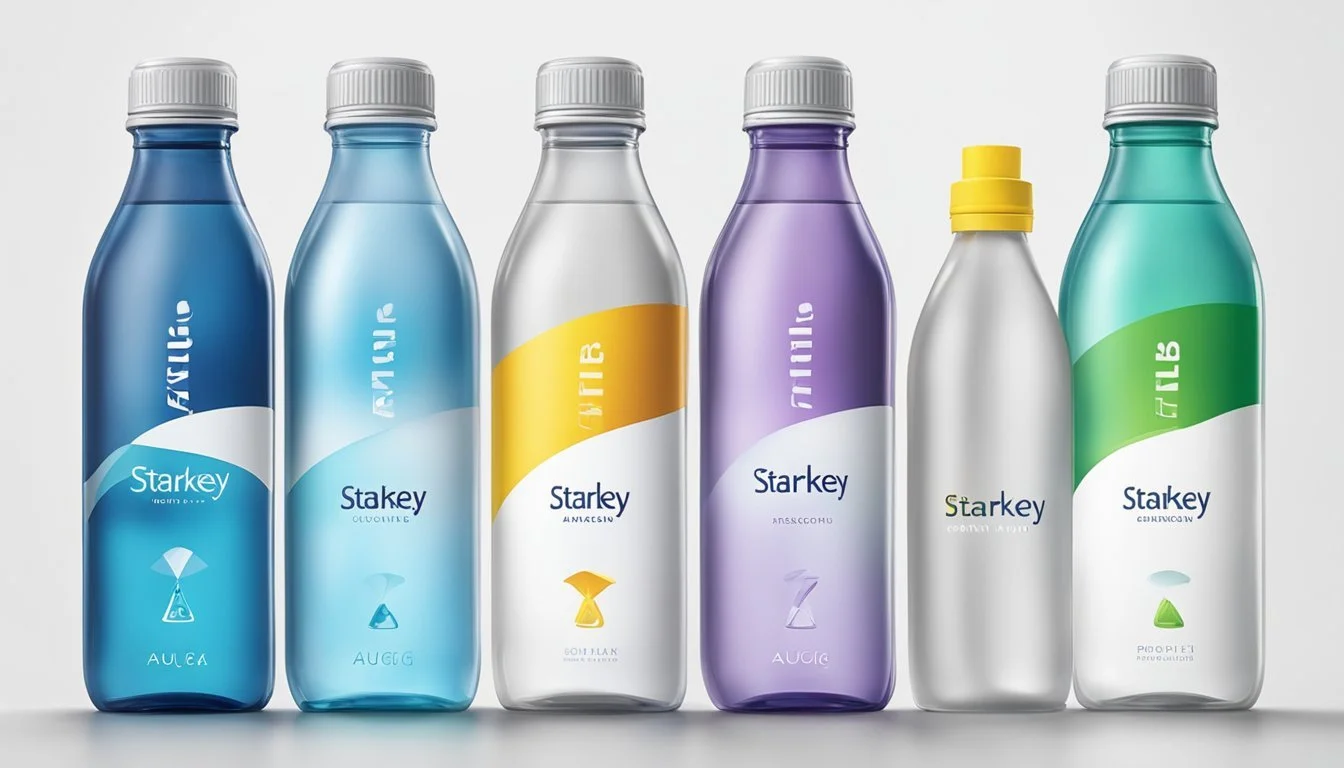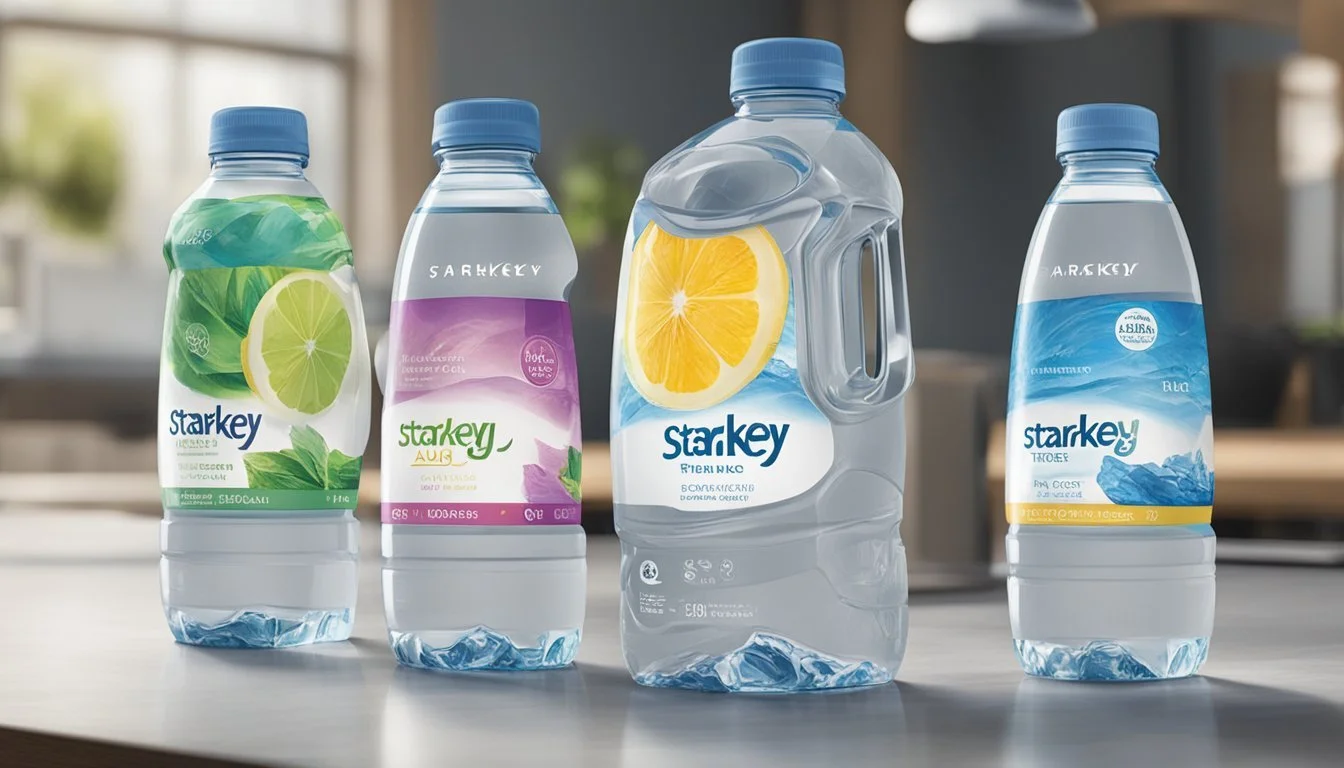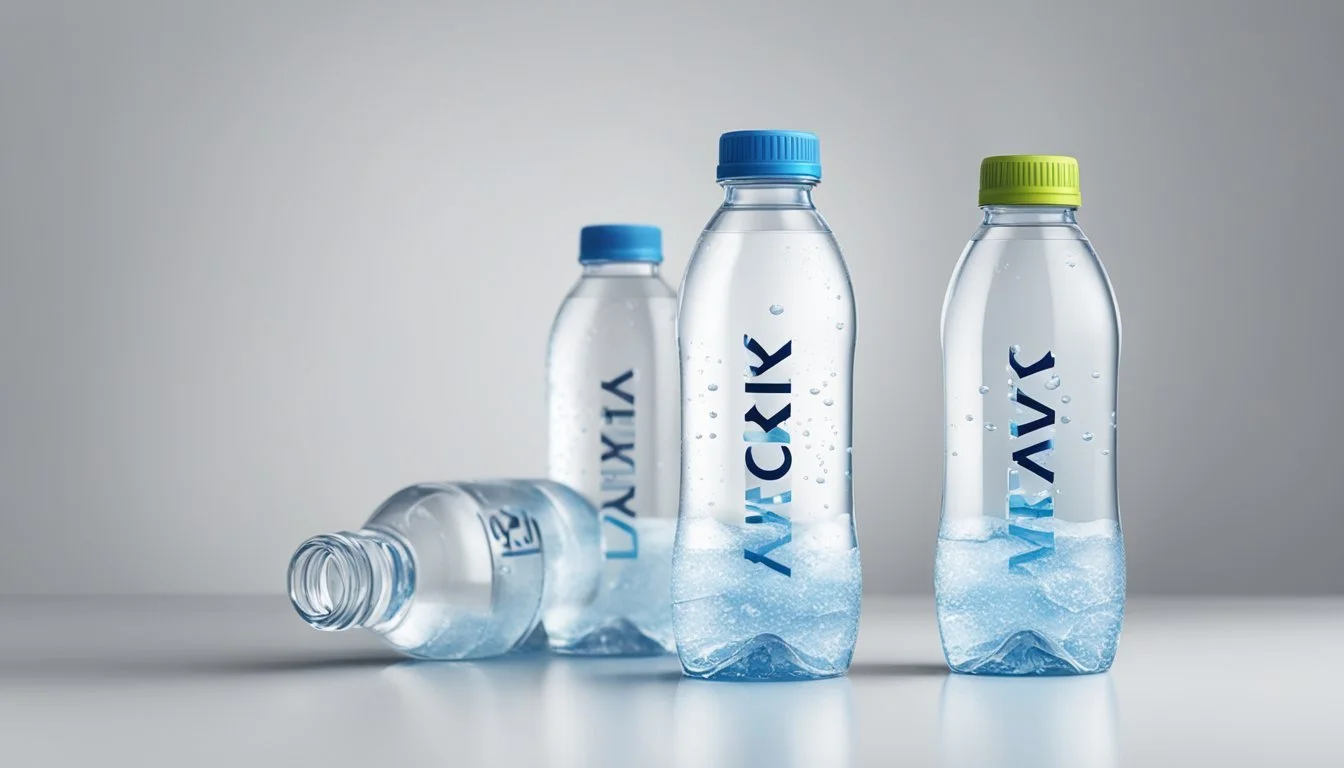Starkey vs. Augi
Which Bottled Water is Better for You?
Starkey vs. Augi: Which Bottled Water is Better?
When it comes to choosing between Starkey and Augi bottled water, consumers are often faced with a decision influenced by various factors such as taste, purity, and brand reputation. Starkey, owned by Whole Foods Market, prides itself on sourcing its water from a geothermal spring in Idaho, offering a unique mineral profile that appeals to health-conscious individuals. Augi, on the other hand, is known for its emphasis on ultra-purification processes, which ensure an exceptionally clean and crisp taste.
For those who prioritize mineral content and natural sourcing, Starkey stands out as the superior choice. Its distinctive mineral-rich composition provides essential nutrients that many bottled water brands lack. Meanwhile, Augi's stringent filtration methods remove impurities to deliver a refreshing and consistent flavor, making it ideal for people who prefer a neutral taste.
Ultimately, the better option between Starkey and Augi depends largely on personal preference. While Starkey offers a natural and nutrient-rich option, Augi provides a purified experience free from any extraneous flavors. Each brand brings something unique to the table, catering to different needs and tastes.
The Fundamentals of Bottled Water
Consumers often assess bottled water quality based on the source, pH levels, and the presence of minerals and electrolytes. Ensuring adherence to standards and maintaining high purity are crucial factors.
Defining Bottled Water Quality and Standards
Quality in bottled water is determined by numerous factors, including purity, taste, and compliance with regulatory standards.
Regulatory Authorities: In the United States, bottled water quality is overseen by the EPA for public drinking water and the FDA for bottled water. The FDA mandates stringent standards to ensure that bottled water is safe for consumption.
Purity Standards: Bottled water undergoes various purification processes such as reverse osmosis, distillation, and filtration to remove contaminants.
Labeling Requirements: Labels must accurately represent the source and composition, ensuring transparency for consumers.
The Importance of Source Water
The source of bottled water profoundly influences its quality and characteristics.
Natural Sources: Bottled water can come from springs, artesian wells, or other natural sources. These sources often have distinct mineral compositions contributing unique tastes.
Protected Sources: Ensuring that the source is free from pollution is essential. Companies usually protect their water sources to prevent contamination.
Environmental Impact: Sustainable sourcing practices are also a key consideration, with companies focusing on reducing their environmental footprint while maintaining natural balance.
Understanding pH in Bottled Water
pH levels indicate the acidity or alkalinity of bottled water, affecting both taste and potential health benefits.
pH Scale: The pH scale ranges from 0 to 14, with 7 being neutral. Most bottled waters have a pH between 6.5 and 8.5.
Effects on Health: Water with a balanced pH is generally preferred. Some consumers believe that alkaline water (pH above 7) offers health benefits like improved hydration and reduced acid reflux.
Taste Preferences: The pH level can influence the water's taste, with neutral to slightly alkaline water often being described as more refreshing.
Minerals and Electrolytes in Water
Minerals and electrolytes contribute to the nutritional value and taste profile of bottled water.
Common Minerals: Many bottled waters contain calcium, magnesium, and sodium, which are naturally occurring in spring or mineral waters.
Health Benefits: These minerals support various bodily functions, such as bone health and muscle function. For instance, magnesium helps in muscle relaxation, while calcium is crucial for bone strength.
Electrolyte Enhancement: Some brands add electrolytes to their water to enhance taste and hydration benefits, making them especially appealing to athletes and active individuals.
Understanding these fundamentals empowers consumers to make informed choices that best suit their hydration needs.
Comprehensive Comparison of Starkey and Augi
This section will compare Starkey and Augi bottled water brands by examining their source, mineral content, taste profile, and packaging. Each aspect is crucial for understanding the benefits and drawbacks of these two brands.
Source and Origin Analysis
Starkey: Sourced from the Starkey Hot Springs in Idaho, USA. This geothermal source provides naturally filtered water that is known for its purity and mineral richness.
Augi: Derived from the Leesburg, Va., municipal water supply. Augi undergoes a purification process to ensure its purity, though it starts as tap water.
Key Points:
Starkey: Geothermal spring source, natural purity.
Augi: Municipal source, purified for drinking.
Mineral Content and Health Benefits
Starkey: Contains naturally occurring minerals such as silica, magnesium, and calcium. These minerals contribute to health benefits like improved bone health and metabolic function.
Augi: Information on specific mineral content is limited. Typically, minerals may be added or retained after purification, but this varies.
Key Points:
Starkey: Rich in beneficial minerals.
Augi: Purification impacts mineral content, less detailed.
Taste Profile Evaluation
Starkey: Known for its crisp and clean taste without significant aftertaste. The natural minerals add a slight, pleasant flavor.
Augi: Reviews indicate a slight sulphuric taste, which may be off-putting to some. While purified, this taste distinguishes it from other brands.
Key Points:
Starkey: Clean, crisp, minimal aftertaste.
Augi: Slight sulphuric note, distinct taste.
Packaging and Environmental Considerations
Starkey: Utilizes traditional PET bottles. There is no extensive use of recycled content, impacting its environmental footprint.
Augi: Bottles are made from 50% post-consumer recycled (PCR) content. This reduces reliance on new plastic, making it a more eco-friendly option.
Key Points:
Starkey: Standard PET bottles, higher plastic use.
Augi: 50% PCR content, more sustainable.
Market Analysis and Brand Positioning
Market analysis of Starkey and Augi must consider consumer preferences, current trends in the bottled water industry in the United States, and the competitive landscape to understand each brand's positioning.
Consumer Preferences and Brand Perceptions
Starkey, available through Whole Foods Market, is known for its mineral-rich content. This makes it appealing to health-conscious consumers who prioritize nutritional benefits in their water.
Augi emphasizes natural sourcing with minimal processing, catering to those who prefer a more "natural" taste and less intervention in their water's production. Both brands garner loyalty through their commitment to quality, albeit through different approaches.
Bottled Water Market Trends in the United States
The US bottled water market was valued at USD 322.88 billion in 2023 and is projected to reach USD 542.44 billion by 2031, growing at a CAGR of 6.7%. There is a rising demand for premium and niche bottled water products as consumers seek unique hydration solutions.
Key trends include increased emphasis on sustainable packaging, clean labels, and enhanced water options such as alkaline and mineral-rich waters. Brands aligning with these trends can capture a larger market share.
Competitor Analysis and Differentiators
Starkey
Strengths: High mineral content, strong association with Whole Foods.
Weaknesses: Limited distribution beyond Whole Foods stores.
Augi
Strengths: Natural sourcing, minimal processing, broader market accessibility.
Weaknesses: Newer market entrant with less established brand recognition.
In summary, Starkey appeals to niche health-focused consumers while Augi positions itself as a more accessible option with a clear emphasis on natural quality. Both brands leverage their unique strengths to compete in a growing market influenced by health and sustainability trends.
Regulatory Compliance and Safety
Both Starkey and Augi bottled water brands must comply with stringent regulations and safety standards to ensure consumer health. Understanding these regulations and certifications is crucial for making an informed choice.
Understanding FDA Regulations
The FDA regulates bottled water under the Federal Food, Drug, and Cosmetic Act (FFDCA). These regulations ensure bottled water meets specific safety and labeling standards.
Bottled water producers such as Starkey and Augi must adhere to these guidelines to ensure their products are free from harmful contaminants. Additionally, the FDA mandates regular testing and compliance with Good Manufacturing Practices (GMP).
EPA Standards and Contaminants
The EPA sets standards for tap water, but bottled water must also comply indirectly. The FDA adopts EPA standards for contaminants, including arsenic, lead, and bacteria, requiring bottled water to be as safe as tap water.
Starkey Spring Water has faced scrutiny due to arsenic levels ranging from 9.49 to 9.56 ppb, which raises concerns given that federal regulations set arsenic limits at 10 ppb. Monitoring these levels closely is vital for consumer safety.
Bottled Water Certifications
Certifications provide consumers with an additional layer of assurance regarding the safety and quality of bottled water. Reputable brands like Augi often seek certifications from organizations such as the International Bottled Water Association (IBWA), which imposes rigorous standards exceeding those mandated by the FDA.
Certifications cover various aspects like water source protection, purification processes, and bottling practices. Consumers can look for these certifications on product labels to ensure they are choosing a certified and safe water option.
Practical Considerations for Consumers
When evaluating bottled water brands like Starkey and Augi, consumers should focus on hydration, nutritional content, convenience, and cost versus quality to make an informed choice.
Hydration and Nutritional Aspects
Hydration quality is crucial when comparing Starkey and Augi bottled waters. Starkey emphasizes its natural alkaline properties, which may appeal to those looking for balanced pH levels in their water. Augi, on the other hand, is marketed around its source purity and minimal processing, suggesting fewer contaminants and a clean taste.
Nutritionally, both brands offer low levels of sodium and other minerals, contributing to a pure hydration experience. However, Starkey’s unique mineral composition can provide trace benefits, such as aiding metabolism and promoting wellness. Consumers sensitive to mineral content might prefer Augi for its simpler profile.
Accessibility and Convenience
Availability is a significant factor for consumers. Starkey and Augi are typically found in major grocery stores and convenience stores. Starkey’s premium focus sometimes limits it to more upscale retail locations, while Augi tends to be more broadly distributed, enhancing its convenience.
Packaging also plays a role in convenience. Starkey often provides glass bottles, which are environmentally friendly but heavier and less portable. Augi primarily offers lightweight plastic bottles, which may be more suitable for on-the-go hydration. Selection should consider whether consumers need water for home consumption or portability.
Cost Versus Quality
Cost is an essential consideration in choosing bottled water. Starkey positions itself as a premium brand, often reflected in higher prices. This cost is justified by its artisanal approach and unique mineral content. Consumers valuing exclusive features might find the price justifiable.
Augi, although slightly less expensive, maintains high standards of purification and quality. It offers a balance between affordability and purity, making it appealing to budget-conscious consumers seeking quality without premium pricing.
Both brands provide value, but decisions should weigh cost against specific hydration and nutritional needs, as well as the convenience of access and packaging.
Closing Remarks
When deciding between Starkey and Augi bottled water, several factors can influence the decision.
Starkey is often appreciated for its natural mineral content. It tends to offer a slightly alkaline pH, which some consumers find beneficial. The taste profile is typically clean, with a subtle hint of minerals.
Augi, positioned in the premium segment, often carries a higher price point. Known for its distinct purity, it appeals to consumers who prioritize quality over cost. The brand strives to deliver a refined taste experience.
Cost, taste, and mineral content are vital factors in selecting the best bottled water. Those seeking economical options might lean towards more budget-friendly choices, while others may prefer investing in higher-end brands.
Incorporating these points into decision-making can help consumers choose between Starkey and Augi based on their specific needs and preferences.
More About Starkey
Icelandic Glacial vs Starkey: Which Bottled Water is Better?
Mountain Valley Spring Water vs Starkey: Which Bottled Water is Better?
Starkey vs Kirkland Signature: Which Bottled Water is Better?
Starkey vs Richard's Rainwater: Which Bottled Water is Better?
Starkey vs Whole Foods Italian Still Mineral water: Which Bottled Water is Better?







